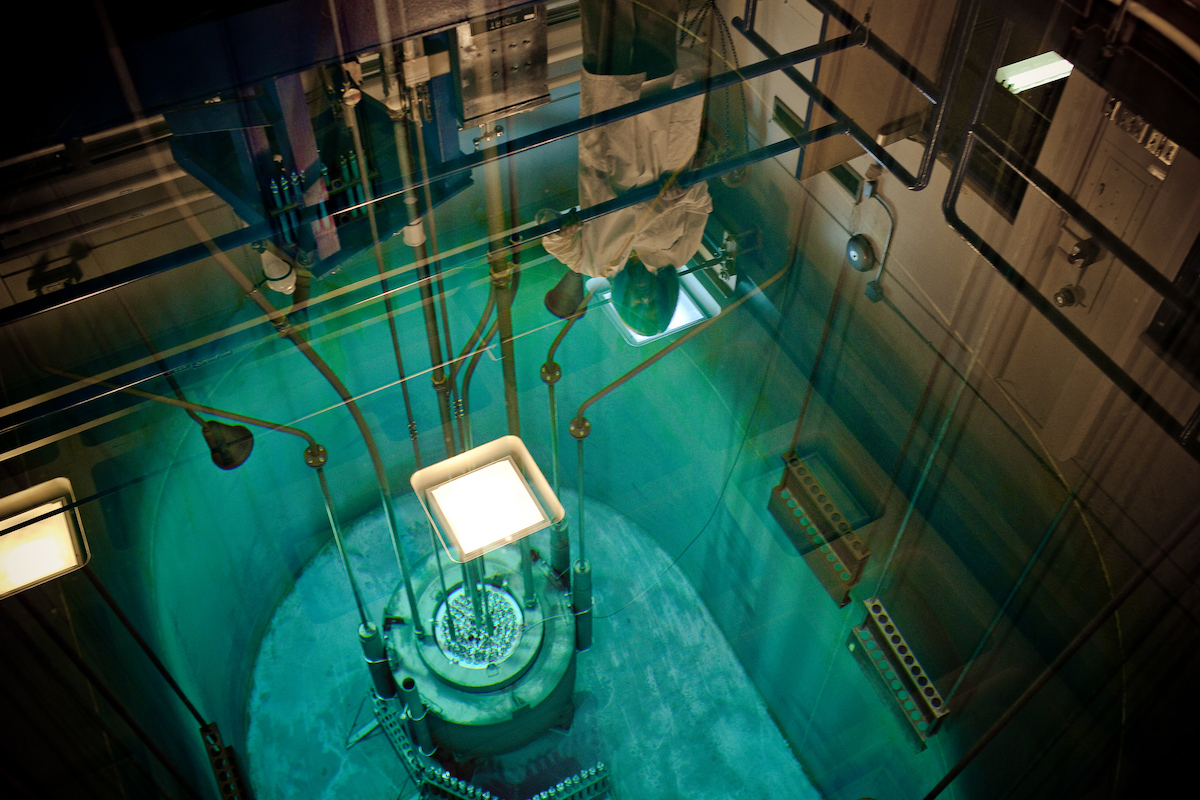Reed Reactor Featured on Atlas Obscura Podcast
Reactor director Jerry Newhouse sheds light on what makes the research facility unique.
The blue glow of Reed College’s research reactor is best experienced in person. But thanks to a new episode of the Atlas Obscura podcast, curious listeners can learn about the only nuclear reactor in the country staffed by liberal arts undergraduates.
Atlas Obscura is a travel publisher with a focus on unusual places and experiences around the world. The podcast airs daily, with brief explorations of destinations such as wild apple groves in Kazakhstan and the World Famous Crochet Museum in Joshua Tree, California.
Jerry Newhouse, director of Reed’s reactor, appears on the June 13 episode to share insight on the facility. “It doesn’t look like anything else on Earth,” he says. The reactor is housed in a 25,000-gallon tank, and the blue glow of the water is what Newhouse describes as “effectively a sonic boom . . . but with light.”
There is no engineering program at Reed, which makes it an unusual site for a research reactor. Instead, the 43 students on the 45-person staff study things like history, biology, and art. “We’re able to see things in a different way and develop procedures that might be different than if we were just a monolithic group of engineers,” Newhouse says. The student-led staff is also infusing diversity into the global reactor community, which is largely male-dominated; at the Reed reactor, men are the minority. According to the episode, Reed has licensed more female reactor operators than all other research reactors in the world combined.
The reactor is used for a wide variety of studies, including analyzing the heavy metals being absorbed by plants in Pacific Northwest forests and comparing clay artifacts to help track potential trade routes.
“Truth be told, working with a nuclear reactor is not quite as dramatic as it sounds,” says podcast host and Atlas Obscura cofounder Dylan Thuras. Reed’s facility is considered zero-risk; the pool housing the reactor prevents radiation from reaching workers. “Someone inside of our reactor bay, while the reactor is operating, will actually receive less radiation than they would outside,” Newhouse says. “Because the building is shielding [them] from cosmic radiation from outer space.”
Tags: Campus Life, Research, Students
